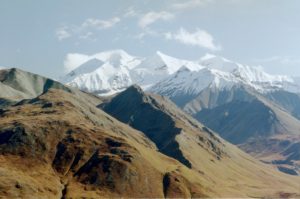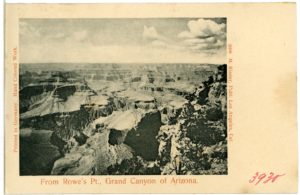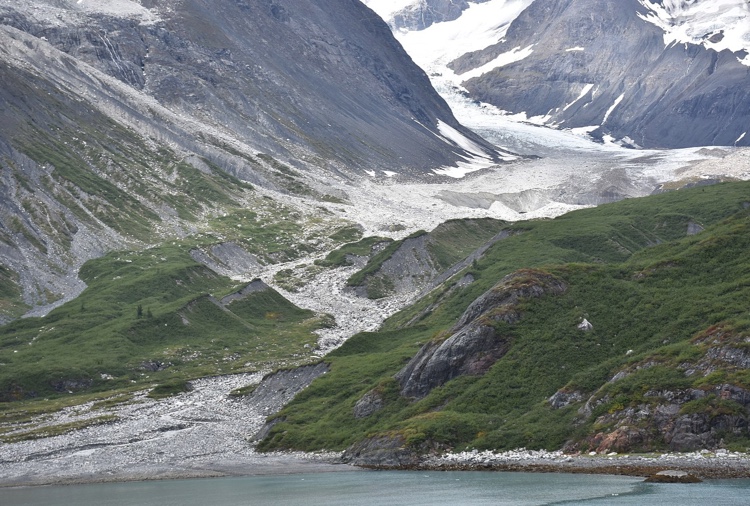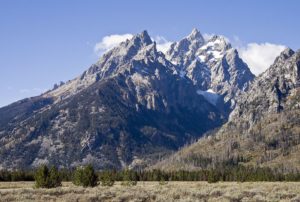February 26 has an important history in conservation. On this date, four national parks were established, all within an era of active national park activity, from 1917-1929.
When the National Park Service (NPS) was created in August, 1916 (read more here), a new era of park management—and creation—began. Created by an Organic Act and housed in the Department of Interior, the NPS had the authority, budget and workforce to become more active in stewardship of our great national heritage of nature, history and culture. The expansion of the national park system began in earnest and continued for several decades.

The first park created under the new NPS was Mount McKinley National Park in Alaska (now Denali National Park). The debate over creating a large park in the middle of the state had gone on for years—some saw the park as an advantage for future tourism, but most Alaskans wanted access to the land for subsistence and market hunting and for mining. Spurred by the dauntless energy of Charles Sheldon, however, and by an American populace energized to preserve the western “wilderness,” President Woodrow Wilson signed the park into law on February 26, 1917, almost six months to the day after the NPS was formed. In the first year of recorded visitation (1922), 7 hardy souls went to the new park; in 2016, nearly 600,000 took the same journey.

Two years exactly after Denali came Grand Canyon National Park, also signed into existence by President Wilson, in 1919. But the Grand Canyon had traveled a long administrative path on its way to park status, with little of the controversy of other parks. Protection was first given to the canyon in 1893, as a “federal forest reserve.” Teddy Roosevelt furthered the protection by declaring part of the area a “federal game reserve” in 1906. Then, in 1908, motivated on by the passionate entreaties of his friend, John Muir, President Roosevelt elevated the canyon’s status to a national monument, providing the complete protection that eventually led to national park status. Annual visitation now stands at 6 million, among the most visited of our national parks.

Another big chunk of Alaska was preserved on February 26, 1925, when the Glacier Bay National Monument was created by the executive order of President Calvin Coolidge (now glacier Bay national Park and Preserve). Like Denali, the establishment of this monument was controversial. The area covered a huge part of southeastern Alaska’s archipelago, rich in timber, game and mineral resources that many Alaskans wanted to develop. The fight for preservation was led by the Ecological Society of America, a scientific group that saw the area as a critically important biodiversity resource and as a unique research location. The 3 million acres of Glacier Bay is now also part of the larger 25-million-acre UNESCO World Heritage Site. Annual visitation is about 500,000.

The fourth action on February 26—this time in 1929—was to create Grand Teton National Park. It was established on this date as a national monument, seeking to protect the Grand Teton mountain range and the lakes that lie at its base from development. John D. Rockefeller was an active proponent of the park and donated some 30,000 acres to its later enlargement. In 1943, the monument was reclassified as a national park. Grand Teton is the southern gateway to Yellowstone National Park. More than 3 million people visit the park annually.
References:
Anderson, Michael F. 2000. Administrative History of Grand Canyon National Park. National Park Service. Available at: https://www.nps.gov/grca/learn/historyculture/adhigrca.htm. Accessed February 16, 2018.
Brown, William E. 1991. A History of the Denali-Mount McKinley, Region, Alaska. National Park Service. Available at: https://www.nps.gov/parkhistory/online_books/dena/hrs.htm. Accessed February 16, 2018.
Catton, Theodore. 1995. Land Reborn: A History of Administration and Visitor use in Glacier Bay National Park and Preserve. National Park Service. Available at: https://www.nps.gov/parkhistory/online_books/glba/adhi/index.htm. Accessed February 16, 2018.
Discovergrandteton.org. Park history. Available at: http://www.discovergrandteton.org/park-history/prehistoric-indians/. Accessed February 16, 2018.
